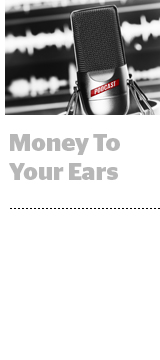
As more people increasingly listen to podcasts, the advertiser dollars are following. As a result, podcasting is poised to become a billion-dollar advertising business in the United States within the next three years.
Advertising revenue earned by podcast creators grew an estimated 53% in 2018 to $479 million, according to the Interactive Advertising Bureau and PricewaterhouseCooper’s 2018 Podcast Ad Revenue Study, released Monday. The numbers are based on self-reported podcast ad revenues from the industry’s 22 largest publishers.
In 2019, US podcast ad revenues will grow 42% to $679 million, based on market estimates. By 2021, US revenue will top $1 billion.
“[Podcasting] is still growing at a healthy clip and certainly outpacing the overall ad industry,” said David Silverman, partner at PwC. “We see a faster-than-industry growth rate through at least 2021.”
Podcast ad revenues are surging because more people are listening to podcasts. In the United States, time spent listening to podcasts increased by 7% in 2018, with more than half of the population age 12 years and older having listened to a podcast in their lives.
“The dollars are still catching up to the audience,” Silverman said. “Marketers are starting to realize there are a lot of people listening to podcasts, and thinking, ‘Let’s figure out how to best advertise in them.’”
Branding is becoming a bigger component of podcast advertising. Brand awareness ads made up 38% of all podcast campaigns last year, up from 29% in 2017. And branded podcasts accounted for 10% of all campaigns in 2018, compared to 6.5% the year before.
Meanwhile, direct response campaigns accounted for 51% of podcast ads in 2018, down from 64% in 2017 and 73% in 2016. As more brand advertisers enter the space, CPM has become the dominant pricing method used by 86% of buyers, while the direct-response metric of cost per action has become insignificant.
“Podcasting had been so significantly used by direct response advertisers in the past,” Silverman said. “But being associated with a particular podcast or host is good branding, so it offers a lot of good attributes for companies promoting a product.”
Pre-produced, dynamically inserted ads are also gaining share. Almost half of all podcast ads (49%) were dynamically inserted in 2018, up from 42% in 2017. Still, more than half of all podcast ads (51%) remain static and baked-in, down from 58% in 2017.
But advertisers still prefer ads read by hosts, which allows them to capitalize off of the host’s relationship with their audience. Host-read ads composed 63% of podcast ads delivered in 2018, down from 67% in 2017, while pre-produced ads grew from 33% to 35% of all podcast ads last year.
Becoming more comfortable with pre-produced ads starts to lay the groundwork for podcast advertisers to embrace programmatic, Silverman said. Programmatic is still nascent in podcasting, representing just 1.3% of all buys in 2018, up from 0.7% the year before.
“I expect programmatic to continue to increase over time,” he said. “But maybe because of the host-read aspect, it won’t be as significant as in other media types.”
Overall, five verticals represented 74% of podcast ad spend, including retail and direct-to-consumer (DTC) brands, financial services, B2B, arts and entertainment and telecommunications.
“DTC was certainly the trailblazer here, putting in a lot of money,” Silverman said. “They find this medium to be extremely attractive.”
This post was syndicated from Ad Exchanger.


More Stories
Warner Bros. Discovery CEO David Zaslav Receives $51.9 Million Pay Package for 2024
TikTok Fave Duolingo Boosts YouTube Shorts Viewership 430% in One Year
Streaming Ratings, Week of March 10: Disney+ Sails to the Top Courtesy of Moana 2